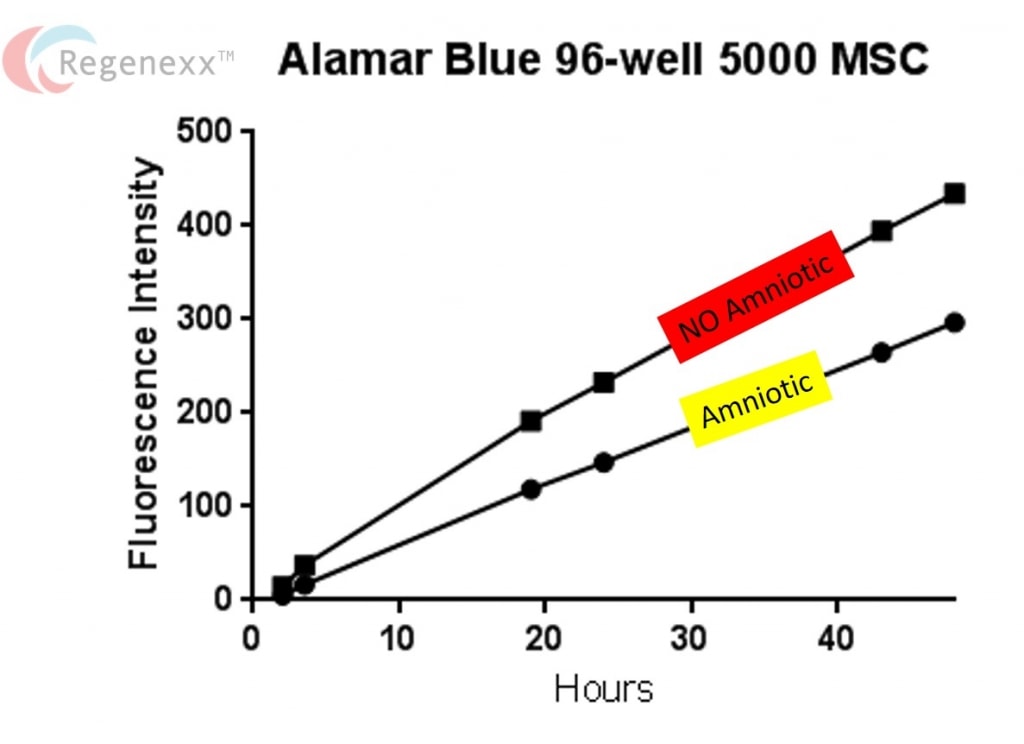More on “Amniotic Stem Cells”: Does This Stuff Help Real Stem Cells?
I’ve blogged before about how the “Amniotic Stem Cells” that are floating around and being aggressively sold to physicians don’t actually contain any stem cells. However, we have been testing these products to see if they have any other value. One of the things I’ve heard from physicians using this stuff is that it has loads of growth factors and those help stem cells. I’ve also heard that it’s a bioactive scaffold and that this should help stem cells. Hence we’ve been testing this stuff with stem cells to see if it helps them in any way.
To review, most of what’s sold as “amniotic stem cells” or “amniotic stem cell therapy” is either amniotic fluid or membrane. The former makes up the “water” that breaks when a woman goes into labor and the later is from the sac surrounding the baby. While these both contain some stem cells when the tissue is fresh, they contain no stem cells once they are frozen, chopped up, freeze dried, shipped, stored, and shock thawed at a doctor’s office. However, because these tissues have growth factors and and other components that could survive the processing, perhaps they can help stem cells in some way when used in conjunction with that kind of therapy.
The data you see above is from a metabolic activity stain known as Alamar Blue. The stain measures proliferation activity-i.e. how metabolically active stem cells are while they’re in culture. The theory is that if amniotic tissue is good for stem cells, when added to stem cells in culture the metabolic activity of and ability of stem cells to proliferate, should go up dramatically. For example, adding in platelet growth factors to stem cells causes their metabolic activity to dramatically rise.
What does the graph above show? First, higher on the graph means more proliferation of the stem cells, so higher is better. Second, this experiment was carried out in triplicate with three different seeding densities of stem cells. The graph above shows that the stem cells without the amniotic tissue out performed the stem cells with the amniotic tissue. So in this experiment, the amniotic tissue didn’t help stem cells proliferate better or become more metabolically active.
The upshot? We have more of these experiments to run with different kinds of amniotic tissue. To date, we know that amniotic fluid doesn’t contain stem cells and in this small experiment doesn’t help stem cells. So far, in our tests, amniotic stem cell therapy as it’s being practiced seems to be a bust. Having said that, we’ll keep all of our readers abreast of any further data we collect.

If you have questions or comments about this blog post, please email us at [email protected]
NOTE: This blog post provides general information to help the reader better understand regenerative medicine, musculoskeletal health, and related subjects. All content provided in this blog, website, or any linked materials, including text, graphics, images, patient profiles, outcomes, and information, are not intended and should not be considered or used as a substitute for medical advice, diagnosis, or treatment. Please always consult with a professional and certified healthcare provider to discuss if a treatment is right for you.

